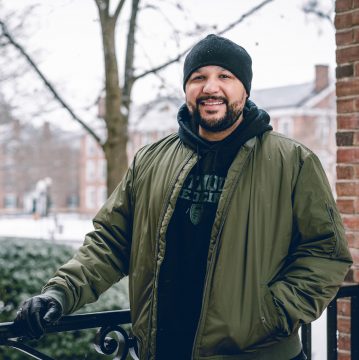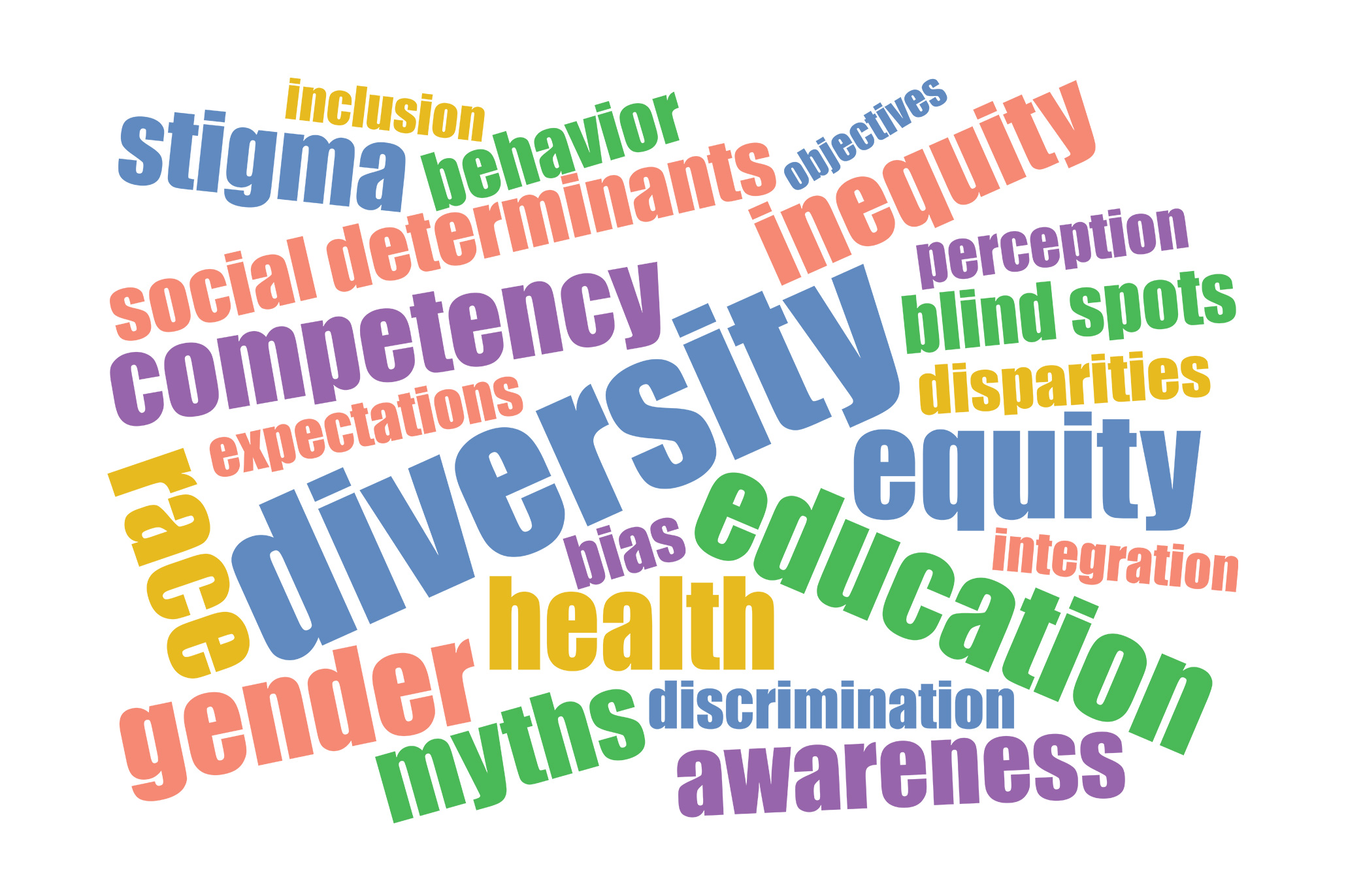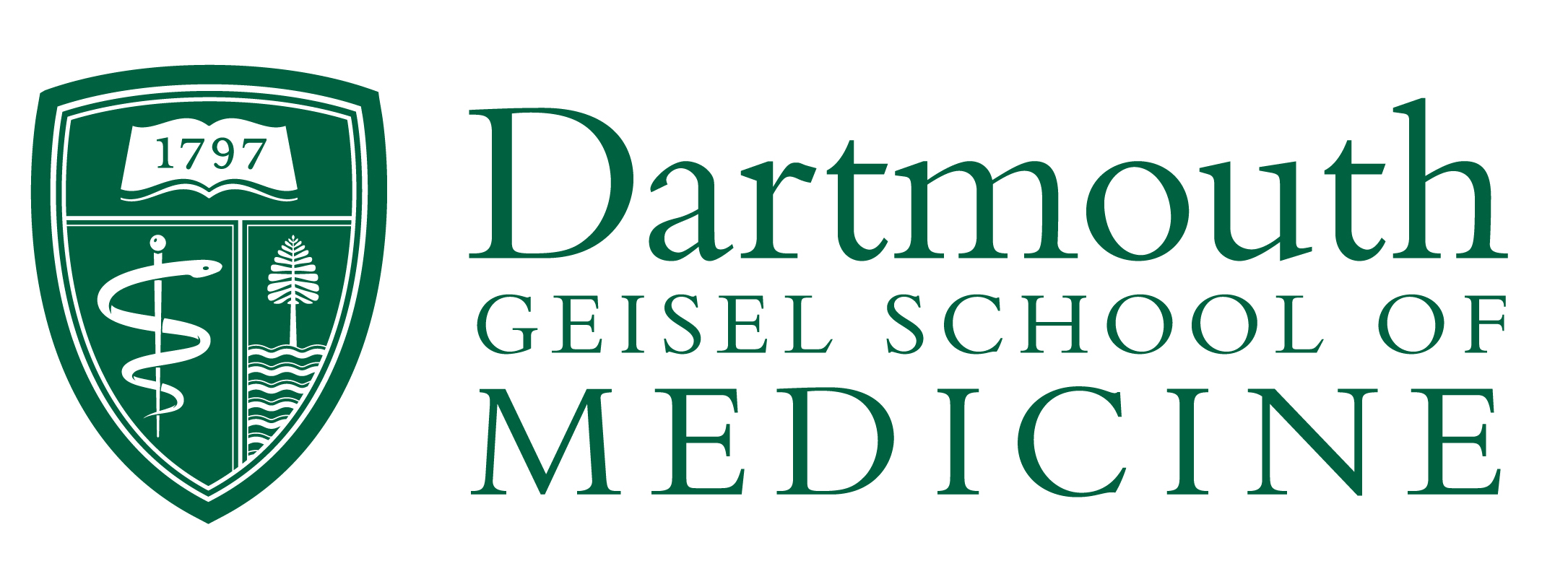Whether or not we are aware of it, our perception of others is rooted in a set of expectations based on how people look, talk or behave, where they live or work, or their level of education. Systemic racism and discrimination are deeply embedded in these expectations and cut across economic, political, and social structures. In healthcare, this social construct often results in inequality when caring for patients.
For the past year, a dedicated group of Geisel School of Medicine faculty, students, and staff, who are interested in positioning the medical school at the forefront of training physicians and thought leaders to help eradicate persistent health disparities, have been working to revise and improve Geisel’s curriculum around complex issues of racism, sexism, and other types of systemic discrimination. They developed a set of learning objectives designed to address practices and cultural norms that perpetuate inherent bias.
But the recent and ongoing national reckoning on racism fostered an accelerated review and update of the initial learning objectives along with the creation of a Race and Health Equity (RHE) Longitudinal Curriculum, bringing awareness of structural competency and implicit bias to the forefront—a start toward eliminating its influence and eradicating entrenched systemic discrimination.
First Steps
Systemic concepts of race and health equity cannot be separated from healthcare—whether you are talking about cardiovascular health or calculating renal function, notes Diana Wu, MD, Geisel’s interim associate dean of diversity and inclusion who leads the RHE curriculum.
Unaware of unconscious bias and dependence on outdated clinical guidelines based on the myth of biological race—where human beings are divided in separate and inferior biologically distinct groups—healthcare providers may either disbelieve or actively discriminate against patients and dismiss or overlook symptoms affecting treatment.
These concepts, in addition to the concept of structural competency, relate to understanding the upstream systems, policies, and institutions that lead to poor health outcomes amongst marginalized groups and shape definitions of health and illness long before doctors and patients meet.
For example, a patient with a stent resulting from a prior heart attack who isn’t taking the medication prescribed to keep the stent open, makes frequent visits to a hospital’s emergency department because of chest pain. Often, healthcare providers may decide this patient is medication noncompliant, however it is vital to consider the systems that have put this patient at risk.
“We need to step back to understand why this patient isn’t taking their medication on a daily basis,” Wu says. “It’s easy to think they are simply noncompliant because there is stigma and bias associated with this behavior—but if we explore what is happening in their life beyond the examination room, we will understand the systemic factors leading them to an inability to take their medication on a daily basis.”
Rather than obstinance, factors such as health literacy (understanding medical terminology), lack of transportation or inability to travel to or have access to a pharmacy, motivation, housing instability, job insecurity, lack of insurance, financial hardship, or communication barriers need to be considered. All these factors can be directly linked to systemic discrimination and marginalization, such as racism.
This shift in thinking toward structural competency, in addition to the interpersonal biases of healthcare providers that contribute to poor healthcare outcomes, is the backbone of the RHE curriculum.
Wu and David Mullins, PhD, associate dean for basic science integration, who are leading the multi-year integration effort, agree the intent is to raise medical students’ awareness of these concepts by weaving them throughout Geisel’s curriculum rather than having individual standalone courses. This way, RHE principles are discussed in the context of each course and repeatedly reinforced throughout the curriculum giving medical students an opportunity to integrate the concepts and put them into practice throughout their training.
The RHE curricular objectives consist of dedicated blocks of time to talk more deeply about race and health equity concepts during first- and second-year courses, then carry those conversations forward by threading them into third- and fourth-year clerkships. Collectively, these discussions build a better understanding of populations that are traditionally marginalized and discriminated against and equip future Geisel graduates to provide better patient care.
With final approval from Geisel’s Medical Education Committee, integration began in Fall of 2020 with a focus on preclinical courses with clinical course integration to follow, Mullins says.
Determining what could be easily integrated for the remainder of this academic year and what is feasible next year—the goal is to make implementation straightforward and useful for course directors and faculty to meaningfully engage students as the initiative moves forward. A handful of first-year courses, among them Infection, Immunity and Inflammation (known as I-cubed), and Foundations, were the first to begin integrating the objectives.
Mullins, who co-directs I-cubed with Richard Zuckerman, MD, MPH, an infectious disease physician and associate professor of medicine, describes how they implemented the learning objectives.
“On the first day of the fall course session, with the help of an external expert in medical anthropology, we had a two-hour discussion about structural competency and reintroduced the idea of looking at it within the framework of the social determinants of health,” he says. “We used that foundation to continue teaching infectious disease through that lens.
“Throughout the course, we interwove discussions about social determinants and structural competency regarding infectious diseases, including HIV, TB, and COVID-19. During a presentation on the social determinants of health and race in HIV, a student who worked in the field stepped-up and taught a spontaneous and outstanding session. We also had a panel discussion on how racism may impact the decisions of public health responses to COVID-19.”
Zuckerman facilitated the 90-minute discussion around HIV where students actively shared their perspectives, which, Mullins says, led to a strong session with everyone learning together.
“At the course’s end, our guest speaker returned to review and discuss what we talked about during the term—we also asked students to consider how they will handle these issues when they become physicians.”
Though he doesn’t yet have student response data, Mullins says anecdotal feedback indicates that students are receptive and find the RHE learning objectives useful. “Our experience has been uniformly positive because students understand we are learning together—it has been good for everyone. These discussions not only prepare our students to be better physicians, they help our faculty become better educators.”
Neurology is another course Wu cites as taking a proactive approach to integrating the learning objectives. Rand Swenson, MD, PhD, a professor of medical education and of neurology who co-leads the neuroscience portion of the course, and Diana Rojas-Soto, MD, an assistant professor of neurology who teaches, have added new course sessions, such as highlighting various neurological conditions that accompany disabilities. Wu says learning objectives related to bias in pain control have also been integrated along with a new session on developmental disabilities from a pediatric perspective, and one about health disparities in neurology care.
Working with a student group advocating to integrate content about caring for patients with disabilities into the RHE curriculum to ensure the content was strategically placed, is a good example of being responsive to student needs that faculty may not be aware of, Mullins says.
Wu is cognizant of the fact that many Geisel students have expertise and a robust background with structural competency. “Rather we are providing a platform for these conversations and an opportunity for their classmates to be brought up to a reasonable baseline of understanding, which is critical to their development as physicians,” she explains.
Why it Matters

Trenika Williams ’21 and Chad Lewis ’21 have both been part of this effort since their early days at Geisel.
As a student representative of the Office of Diversity, Inclusion, and Community Engagement (DICE), Lewis and fellow DICE representative Jake Perlson ’21 created a mechanism to provide real-time online feedback to course directors on issues related to diversity, equity, and inclusion (DEI). The goal, Lewis says, “was to build a database of potential hot spots within the curriculum that may warrant a closer look.”
Williams’ involvement began a few summers ago when she helped update problem-based learning cases to be more nuanced in their presentation of race as opposed to other social determinants of health. “I’ve also worked with faculty members on a separate project to better integrate Geisel’s previously developed Health and Values curriculum into a few Scientific Basis of Medicine courses,” she says. “This project specifically focused on better incorporating social and historical context, including racism’s impacts on both the care we give and our patients’ health outcomes, into the material presented in these courses.”
Wu admits physicians are not exempt from the social assumptions, stigmas, and discrimination that become part of their medical judgement when treating populations that have traditionally been ignored by medicine. Assumptions that raise important questions about how to strip away bias and blind spots.

“Racism and other forms of systemic oppression permeate throughout our institutions, including healthcare and medicine. Because these institutions were designed to serve White, able-bodied men, it is paramount to have an actively anti-racist, anti-oppressive lens when seeking to address inequities,” she explains.
Additionally, “when we look at discrimination toward those who are disabled, which is something that has traditionally not been discussed, it’s not only about how to medically treat someone with a musculoskeletal disability, but also about how we as a society discriminate against people with disabilities and assume a level of quality of life based on function.”
Orthopedics is another example. “In terms of structural competency, we can talk policies, or lack thereof, or discrimination that prevent people with disabilities from engaging more actively in society. From a standpoint of social determinants of health, income inequality, and access to physical therapy, assistant devices, surgery, or expensive treatments contribute to one’s function,” Wu adds. “For some of our students, this is not new.”
For Williams, the RHE is particularly meaningful because this work has traditionally been done in silos. “Knowledge and understanding of race and racism, and each factor’s impact on health should not be relegated to electives and limited to students who have taken a special interest in this information,” she says. “These issues must be compulsory aspects of educating all future physicians—equity is everyone’s job. I am grateful to see the individual projects I and other students have been working on throughout our time at Geisel coalesce into something meaningful and lasting.”

The importance, Lewis says, of integrating concepts such as “the historical basis of the marginalization of certain populations, the limitations of race-based medicine, transgender care, environmental justice, migrant health, and caring for individuals with intellectual disabilities and developmental disorders—is they are pivotal to helping medical students firmly grasp the social determinants of health and how they factor into health outcomes. This will help eradicate health disparities in America and beyond.”
With the integrated RHE curriculum, students will leave Geisel with a solid medical education and a toolbox of skills they can use when they step up and face these challenges as medical professionals, Mullins says. “This amplifies why we aren’t presenting these as a standalone course, which compartmentalizes them and doesn’t give them the emphasis they deserve.”
Reflecting on what they have quickly accomplished, Wu and Mullins agree everyone involved in the RHE longitudinal curriculum is proud of the work they have done in revising and refining the learning objectives. And an ongoing assessment of the curriculum ensures it will be reviewed and updated in order to remain relevant.
Racism has long been at the center of health disparities and economic inequities for both people of color and other marginalized communities. By acknowledging systemic racism’s existence and developing specific and dynamic learning objectives that have the potential to dismantle it, Geisel School of Medicine is contributing to both national and global conversations about the effect of racism on health and healthcare and taking steps to ameliorate its consequences.





